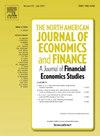How does the supplier size similarity affect trade credit?
IF 3.8
3区 经济学
Q1 BUSINESS, FINANCE
North American Journal of Economics and Finance
Pub Date : 2025-01-01
DOI:10.1016/j.najef.2024.102346
引用次数: 0
Abstract
Suppliers’ bargaining power mainly comes from their market position or top supplier status. However, it is also affected by the horizontal interaction from top supplier size similarity based on the purchasing proportion of a buyer. Using a sample of listed companies in China, we find an inverted U-shaped relationship between the supplier size similarity with shared customers and trade credit provisions. As size similarity increases, suppliers may increase (decrease) trade credit provision to expand sales (for cash income). That is, based on the degree of supplier size similarity, the similarity may strengthen or weaken the supplier competition. We also find that if the business environment is poor, or if it is during a market crisis, the competition effect from supplier size similarity is not obvious, whereas a small board size of buyer promotes the supplier competition. In addition, the competition effect from supplier size similarity is not observed in state-owned enterprises (SOEs).
供应商规模相似性如何影响贸易信用?
供应商的议价能力主要来源于其市场地位或顶级供应商地位。然而,它也受到基于买家采购比例的顶级供应商规模相似性的横向交互作用的影响。以中国上市公司为样本,我们发现供应商规模与共享客户相似度与贸易信贷额度之间存在倒u型关系。随着规模相似性的增加,供应商可能会增加(减少)贸易信贷额度以扩大销售(现金收入)。也就是说,基于供应商规模的相似程度,相似度可以增强或削弱供应商的竞争。我们还发现,在经营环境较差或处于市场危机的情况下,供应商规模相似性的竞争效应不明显,而买方董事会规模较小则促进了供应商竞争。此外,在国有企业中没有观察到供应商规模相似性的竞争效应。
本文章由计算机程序翻译,如有差异,请以英文原文为准。
求助全文
约1分钟内获得全文
求助全文
来源期刊
CiteScore
7.30
自引率
8.30%
发文量
168
期刊介绍:
The focus of the North-American Journal of Economics and Finance is on the economics of integration of goods, services, financial markets, at both regional and global levels with the role of economic policy in that process playing an important role. Both theoretical and empirical papers are welcome. Empirical and policy-related papers that rely on data and the experiences of countries outside North America are also welcome. Papers should offer concrete lessons about the ongoing process of globalization, or policy implications about how governments, domestic or international institutions, can improve the coordination of their activities. Empirical analysis should be capable of replication. Authors of accepted papers will be encouraged to supply data and computer programs.

 求助内容:
求助内容: 应助结果提醒方式:
应助结果提醒方式:


